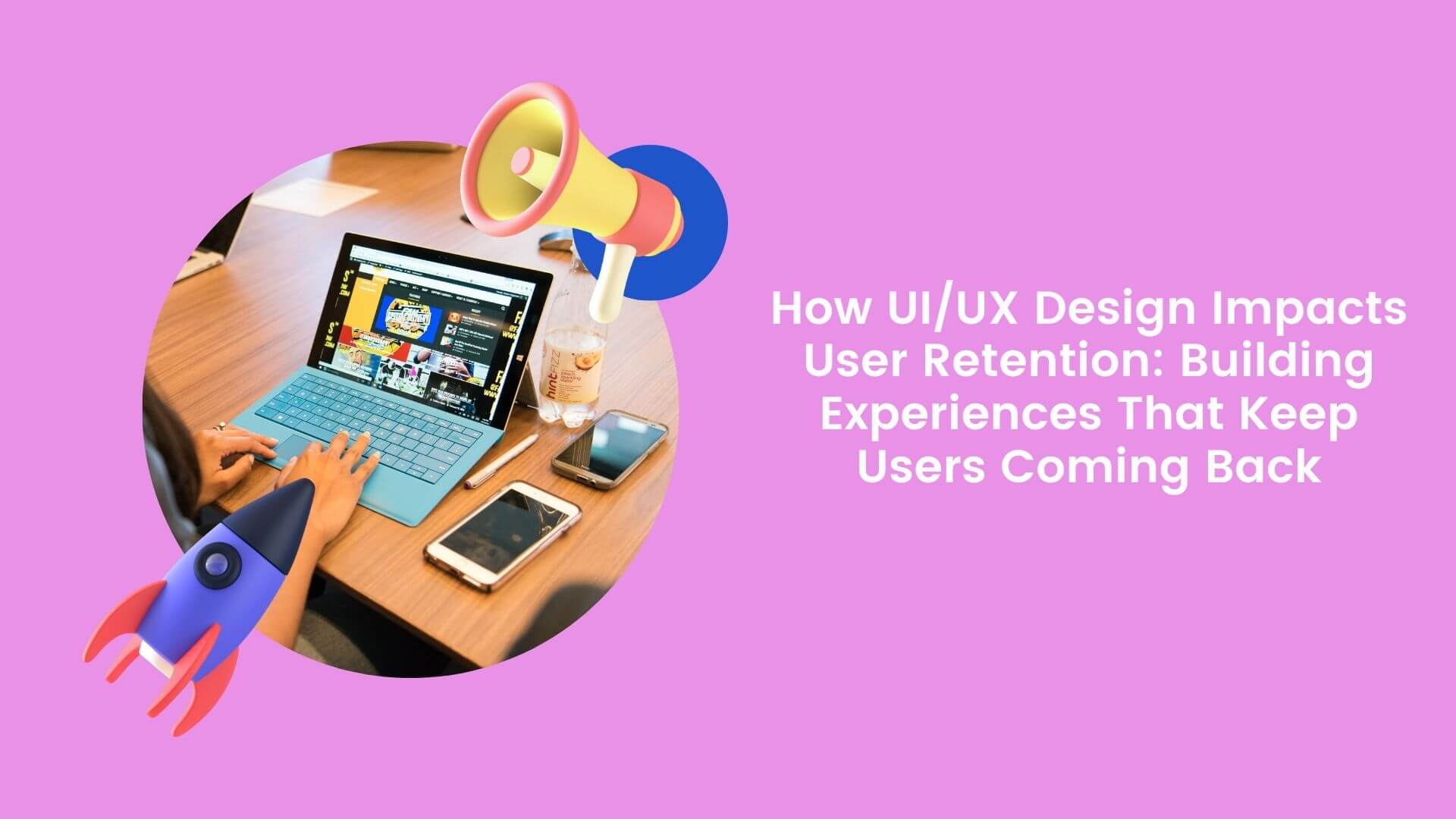In today’s fast-paced digital world, grabbing users’ attention is challenging—but holding it is even harder. With endless choices available at the click of a button, users are quick to abandon apps and websites that don’t meet their expectations. This is where UI/UX design comes into play. A well-thought-out user interface (UI) and user experience (UX) design can make the difference between a one-time visitor and a long-term, loyal user.
In this article, we’ll explore how UI/UX design directly influences user retention, the key design elements that improve loyalty, and actionable strategies for designers and product teams.
Understanding UI and UX: A Quick Refresher
- UI (User Interface) refers to the visual elements users interact with—buttons, icons, spacing, color schemes, typography, and more.
- UX (User Experience) is the overall feel a user gets while using a product, including how intuitive, satisfying, and seamless the experience is.
While they are often discussed together, UX focuses more on usability and flow, while UI focuses on the look and interactive elements. Both are critical to user retention.
Why User Retention Matters
User acquisition gets your foot in the door, but user retention keeps your business alive and thriving. High retention leads to:
- Increased lifetime value (LTV)
- Lower customer acquisition costs (CAC)
- More referrals and word-of-mouth marketing
- Better product feedback and community growth
Studies show that increasing customer retention by just 5% can increase profits by 25–95%. Retention is the engine behind sustainable digital growth.
How UI/UX Design Influences User Retention
First Impressions Count
Users form opinions within the first few seconds. A clean, professional, and well-structured interface builds trust instantly. Cluttered, outdated, or confusing designs cause users to bounce before even exploring the product.
Retention Tip: Invest in strong onboarding screens and an intuitive homepage layout to capture attention early.
Ease of Navigation
If users struggle to find what they need, they leave. Intuitive navigation, clear call-to-actions (CTAs), and consistent iconography help users explore your product without friction.
Retention Tip: Use established design patterns (like hamburger menus or tab bars) to create familiarity and ease.
Speed and Responsiveness
No matter how beautiful your design is, if the app or website lags, users will get frustrated. Quick loading times and responsive design across all devices are essential.
Retention Tip: Optimize your UI assets and use UX principles like loading animations or progress indicators to improve perceived speed.
Personalization and Customization
Users love experiences tailored to their needs. Thoughtful UX design allows users to personalize settings, choose themes, or receive content based on their behavior.
Retention Tip: Incorporate user preferences into the design and make these options easily accessible in settings.
User Feedback and Confirmation
Whether it’s a “success” message after submitting a form or a vibration after clicking a button, feedback reassures users that the system is working as intended.
Retention Tip: Use micro-interactions and contextual feedback to keep users informed and engaged.
Accessibility and Inclusivity
An accessible design ensures that users of all abilities can interact with your platform. Ignoring this alienates a significant portion of your audience.
Retention Tip: Follow WCAG guidelines, support screen readers, offer contrast options, and design for keyboard navigation.
Consistent Design Language
Consistency in fonts, colors, button shapes, and layouts helps users learn how your app works more quickly. This builds confidence and reduces the learning curve.
Retention Tip: Use a design system or UI kit to maintain visual and functional consistency across your product.
Psychological Triggers Used in UX to Boost Retention
- Gamification: Reward systems, points, and achievement badges create motivation loops.
- Progress Indicators: Showing users their progress (e.g., profile completion bars) encourages them to return and finish tasks.
- Social Proof: Ratings, reviews, and user-generated content foster trust and keep users engaged.
- Habit Loops: Repeated patterns like daily challenges or streaks create habits that build long-term engagement.
Case Studies: UI/UX Success Stories
- Duolingo: With bright UI, delightful characters, and gamified UX, Duolingo retains millions of users in language learning.
- Spotify: A highly personalized experience with sleek UI and intuitive UX keeps users coming back for daily playlists.
- Airbnb: A clean UI with guided UX elements helps users quickly search, book, and feel safe on the platform.
Each of these companies has invested heavily in user-centric design, and their retention rates reflect that success.
Practical Strategies for Designing with Retention in Mind
- Conduct User Testing Early and Often – Real feedback helps refine the UX and uncover friction points.
- Design for Mobile First – Mobile users make up a large portion of digital traffic. Prioritize responsive and adaptive UI.
- Streamline Onboarding – Make the first interaction clear, valuable, and quick.
- Use Analytics to Iterate – Tools like Hotjar, Google Analytics, or Mixpanel can show where users drop off.
- Add Delight Through Animation – Small animations or visual cues can make the product feel alive and satisfying.
Conclusion
Great UI/UX design is not just about beauty—it’s about utility, emotion, and consistency. When users feel understood, empowered, and delighted by their digital experience, they return again and again. For businesses and product creators, this means investing in thoughtful, data-driven design that solves real user problems and keeps evolving.
In an age where attention spans are shrinking and competition is rising, user retention is the battlefield—and UI/UX design is your most powerful weapon.
